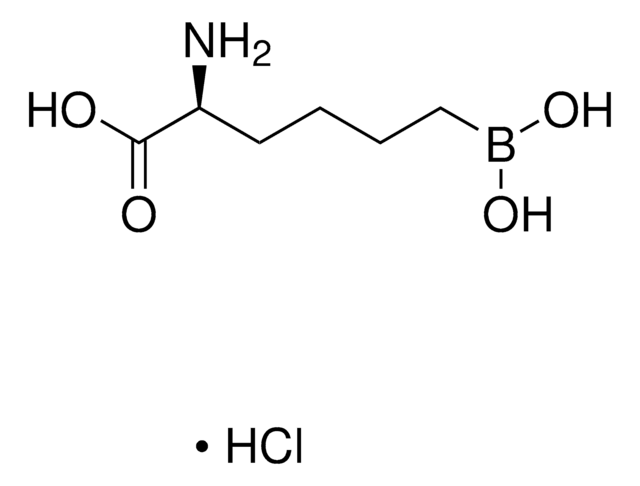SML0140
BV02
≥98% (HPLC)
Synonyme(s) :
2-(2,3-Dihydro-1,5-dimethyl-3-oxo-2-phenyl-1H-pyrazol-4-yl)-2,3-dihydro-1,3-dioxo-1H-isoindole-5-carboxylic acid
About This Item
Produits recommandés
Description
The structure of BV02 differs slightly from the published form, but has been internally verified by Sigma-Aldrich quality control.
Niveau de qualité
Pureté
≥98% (HPLC)
Forme
powder
Couleur
white to off-white
Solubilité
DMSO: >5 mg/mL
Température de stockage
room temp
Chaîne SMILES
CN1N(c2ccccc2)C(=O)C(N3C(=O)c4ccc(cc4C3=O)C(O)=O)=C1C
InChI
1S/C20H15N3O5/c1-11-16(19(26)23(21(11)2)13-6-4-3-5-7-13)22-17(24)14-9-8-12(20(27)28)10-15(14)18(22)25/h3-10H,1-2H3,(H,27,28)
Clé InChI
ZFYSDSINNOLWGO-UHFFFAOYSA-N
Application
Actions biochimiques/physiologiques
Mention d'avertissement
Warning
Mentions de danger
Conseils de prudence
Classification des risques
Aquatic Acute 1
Code de la classe de stockage
11 - Combustible Solids
Classe de danger pour l'eau (WGK)
WGK 3
Point d'éclair (°F)
Not applicable
Point d'éclair (°C)
Not applicable
Certificats d'analyse (COA)
Recherchez un Certificats d'analyse (COA) en saisissant le numéro de lot du produit. Les numéros de lot figurent sur l'étiquette du produit après les mots "Lot" ou "Batch".
Déjà en possession de ce produit ?
Retrouvez la documentation relative aux produits que vous avez récemment achetés dans la Bibliothèque de documents.
Notre équipe de scientifiques dispose d'une expérience dans tous les secteurs de la recherche, notamment en sciences de la vie, science des matériaux, synthèse chimique, chromatographie, analyse et dans de nombreux autres domaines..
Contacter notre Service technique







